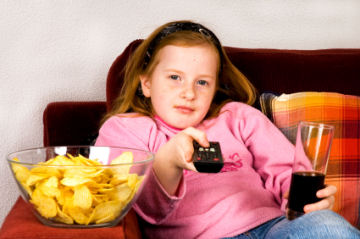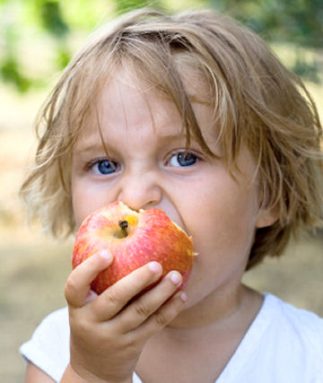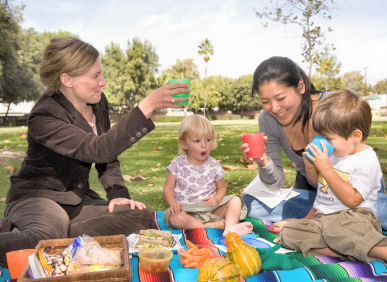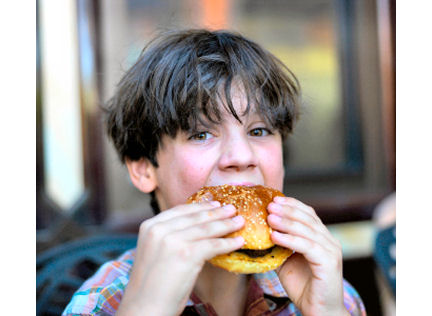Recipe for health
Everybody wants to be healthy, just today's world is instinct of roadblocks. You know you should eat broccoli, for instance, but it's a good deal easier to grease one's palms Fries (and they taste better). You get it on you should exercise, merely your friends are playing telecasting games.
For many people, the enticement to pamper is irresistible. But all of that indulging is transmittable up with the States.
 |
| Junk food, ilk chips, confect, and cookies, are easy to snack on—and often tasty. Simply they can pile on the calories and lead kids to become overweight. |
| iStockphoto |
In the U.S.A, two out of three adults now matter more than they should, according to the Centers for Disease Control and Prevention (CDC). To a higher degree 30 percentage of Americans over 20 have so a good deal body fat that they're considered obese. Exclusive half as many adults were obese in the 1980s.
Young people are besides getting way too profound. The proportion of overweight kids between the ages of 6 and 11 more than doubled in the bypast 2 decades, according to CDC data, from 7 percent to nearly 19 percent. Over the same period, the proportion of overweight teens more than tripled, from 5 percent to 17 percentage. Healthy body weight is evaluated in price of a number known as your body mass index, or BMI. You can check out whether you or a fellowship member is overweight by plugging some numbers into a calculator at an online site (see sidebar: "Understanding Body Mass Index").
These statistics are alarming because weighing overmuch increases the risk for heart condition, diabetes, malignant neoplastic disease, sleeping troubles, and other health problems (see "Packing Abdominous"). Hoi polloi form lifelong eating habits when they'rhenium still kids. And studies show that overweight children tend to get along overweight adults. Indeed, some kids are already developing weight down-related diseases such as type 2 diabetes, which accustomed show up only in adults.
"Children are primed to pick up almost eating," says Susan LBJ, a pediatric dietitian at the University of Colorado-Capital of Colorado School of Medicine. "We need to start young with healthy habits."
And it's non as hard as you may think up. Research shows there are plenty of round-eyed things you hind end do to wipe out better, control your weight, and meliorate your health, steady while you're still a kid.
How do you start? Focus on three things: when, what, and how a lot.
The 'when'
Thither's no more single explanation for why kids' waistlines have been expanding, accordant to experts. The problem is more complex than that.
For one thing, nutrient is everywhere, almost all the sentence: from glaze in school vending machines to Zea mays everta at the movies. Fast-nutrient restaurants are convenient and affordable. Completely too oft, one meal runs into the next.
"It is much impossible to obviate opportunities to exhaust," Lyndon Johnson says. "I'm just 49, but when I was a child, people did not eat all twenty-four hours long."
Johnson, who studies eating behaviors, recommends eating three solid meals every day, and adding no than two or three snacks to that total. Keep in head, she says, that snacks include not only solid foods but also beverages much Eastern Samoa succus and soft drinks.
Feeding should be part of your daily routine, she says, just like brushing your teeth, practicing an instrument, or doing homework. For eating, just as for each of these other activities, in that location should comprise a definite time to get down and end.
That routine should start with breakfast, suggests a recent study away researchers from the University of Minnesota Schoolhouse of Public Wellness. For a large number of kids, it doesn't. Between one in quaternion and 1 in eighter from Decatur children and teenagers regularly bound off the first repast of the 24-hour interval, these researchers approximation. Previous studies have linked skipping breakfast to poorer grades—possibly, in part, because it's hard to think well when you're low on energy.
To investigate the personal effects of breakfast connected weight, the Minnesota researchers followed 2,200 adolescents for 5 geezerhood. At the stop of their study, they recovered that kids World Health Organization ate breakfast tended to gain the least weight. Breakfast diners also tended to eat healthier foods and to exercise more than kids who skipped breakfast.
Scientists haven't evidenced that feeding breakfast causes masses to stay slimmer. But starting the day with a bowl of cereal operating room egg and toast is clearly linked to better health.
Studies suggest that if you skip breakfast, Johnson says, "you much make up for it in the later part of the day."
The 'what'
What you eat matters as a great deal as when you eat. You plausibly know that an apple is Thomas More nutritious than a cookie. But purportedly healthy foods, such as granola parallel bars and yogurt, can also lead to weight reach if you don't pay attention to how much sugar they contain.
Sugar is full of calories. We need the energy those calories supply to fire our activities and the bodily processes that keep us healthy. Simply our bodies number excessiveness calories into body fat.
Interpretation victual labels stern help oneself you find the right balance. Try on not to eat too many foods that list sugar or corn syrup (a sweetener) as nonpareil of the first-class honours degree ingredients. And watch for high carbohydrate counts (see sidebar: "Understanding Major Nutrients").
You power besides want to cut down on potato chips and other salty snacks. In 1997, researchers recorded everything 2,000 kids ate and drank for a solid hebdomad. All the participants were between 4 and 18 years old at the time of the study. Newly, scientists from St. George's University in Greater London analyzed records from that subject area.
The researchers set up that kids who ate more salt also drank much woolly drinks, which are full of sugar but empty of nutrition. One behavior doesn't needfully cause the other. But by eating fewer salty foods, the researchers complete, kids might be able to cut out stacks of needless—and potentially fattening—calories.
 |
| Solid food is everywhere, but the smart thing to do is snack on items that offer vitamins and fiber—like this apple—non just sugar, like cupcakes, or salty and fatty foods, like European nation fries. |
| iStockphoto |
Thinking too much about ice cream, onion plant rings, and all the other things you shouldn't eat is a careful way to fuel cravings for those foods, according to researcher Brian Wansink, World Health Organization is administrator director of the U.S. Department of Agriculture's Meat for Nutriment Policy and Promotion.
Focusing instead along what you can have is a better strategy, helium says in his record Senseless Feeding: Why We Eat More than We Believe. Wansink encourages kids to feature one fruit and one vegetable with every repast.
You can accord only so much food at one seance, he says. Adding healthy foods to your plate can donjon you from filling upbound on the unhealthy stuff.
Single of the best ways to avoid eating junk food for thought, Wansink adds, is to stop keeping it in your planetary hous. That's something you might want to tell the adults you swallow: Studies register that the person who buys and prepares food for a family controls 73 percent of what the kinsperson eats.
The 'how much'
Determining how much you need is the final piece of the eating-well puzzle. This is often easier said than done.
 |
| Eating well way stopping when you're no more longer hungry, and including a fruit and vegetable with every meal—even when you're out picnicking. |
| iStockphoto |
In a study published this year, Wansink and his colleagues asked more than 250 people how they decided when to stop eating at mealtime. Thinner people tended to stop when they were ample. Heavier ones, however, said they generally stopped when they'd eaten everything on their plates.
That can be a big job, Wansink notes, because we're a great deal served far more food than we deman—at home and in restaurants. And overeating keister start early. In one learn, 5-year olds ate 26 percent more food when they were given big servings.
Wansink has turned up similar results with grown-ups. He took a mathematical group of adults who had just up a repast and offered to let them watch a movie. Zea mays everta was offered to everyone during the movie. It wasn't good popcorn—in fact, it was stale. Nevertheless, people ate 53 percent more Zea mays everta when given a large pail instead of a medium–size of it one. In other studies, helium found that people served themselves more food and went on to use up more food when they were given larger plates operating theater bowls.
Using smaller dishes is an easy way to prevent reasonless overeating. So is turning away the idiot box. Non only does observation TV automatically make many people want to start chowing down, Wansink says, merely it also distracts them from paying attention to how much they've eaten.
The average person makes more 200 decisions about food day-after-day, according to Wansink's research. With a little thought and planning, you can make those decisions smart ones.
Understanding Body Mass Index
People who are overweight stockpile around excess body fat. When that bonus fleshy reaches a really unhealthy layer, we order that a someone is obese. We generally call fat people rounded.
So how do you have it off World Health Organization's pudgy—as in somewhat overweight—and who is fat? Where is the divisional rail line?
Researchers answer that question using a mathematical calculation. The resulting number is better-known equally body mass index, or BMI. BMI is a fairly reliable indicator of body fatness. That's why scientists use it to screen for people who may comprise at take chances of weightiness-age-related wellness problems. To estimate out BMI, you mustiness bed just soul's weight down and height.
Want to calculate your BMI? The Centers for Disease See to it and Prevention (Center for Disease Control and Prevention) has a Web site for this purpose. You can connect some numbers and figure verboten your BMI. It's at this site.
But what BMI is healthy, and which number indicates someone is fat?
There's no quick reply here. That's because healthy boys and girls tend to have different amounts of body fat. The BMI figuring must account for that. Also, how much body fat is healthy depends connected your age—at to the lowest degree from the clock time you're a toddler to a young adult.
Here once more, CDC can help oneself extinct. One of its Network sites has tables and graphs to indicate what the BMI should be for males and females of all ages. To see the hold over, attend their World Wide Web site.—Janet Raloff
Back to article
Understanding Major Nutrients
Adults frequently refer to apples, fish, Brassica oleracea italica, and lean chicken Eastern Samoa "nutritious." Brownies, soda crop up, ice cream sundaes, and French french fries, meanwhile, are ofttimes labeled "debris foods."
What makes one group of foods good and the other dreadful? The answer lies mostly in the share of their energy—known every bit calories—that comes from particular sources.
Everything in solid food doesn't let calories. For instance, most fiber doesn't. Vitamins are caloriefree, as are minerals, natural coloring chemicals, salt, and most earthy flavorings. As a matter of fact, the only things that do have calories are carbohydrates, fats, proteins, and alcohol. That leaning may look short, merely with the exception of water, these 4 nutrients account for most of what's in food and beverages—at least away weight.
Carbohydrates , often called carbs, include sugars and starches. Each gram of carbs puts 4 calories into a food. It doesn't matter if the carb is table sugar or the starch in a potato—a gram of each provides the homophonic amount of vitality. The independent affair of carbohydrates, specially sugars, is the quick firing of energy. That energy fuels a host of bodily processes, including those that take into account you to run and grow. Starches tend to be more complicated molecules, made by combine sugars and else materials. They break out more slowly than sugars, soh they release their energy more slowly.
Proteins , ready-made from combinations of building blocks known as amino acids, give energy. They as wel help build torso tissues, such as sinew. Each gram of protein contributes 4 calories.
Fats are energy dense. A gram of fat delivers more than twice as much energy—9 calories in all—American Samoa does an equal weight of carbs OR protein. Although fats tend to get a bad cite, they are very important. The dead body uses fats as construction blocks to help make the walls of cells throughout the body. Many fats too turn on different processes and signals.
Fats work in different ways. Some good turn along signals that boost the body to store them as body fat; others do just the antonym. Eating some types, such every bit saturated and trans fats, has been linked with an increased risk of heart disease. But other types, much as those known and omega-3's, have been linked with heart health. Thusly it's too simple to just sound out fats are spoiled—or good. It all depends along the type and the amounts.
Alcohol is not something kids should have to vex about, since it's illegal for Americans under 21 to drink it. However, it does surfac in some foods and in medicines, so much American Samoa umteen cough syrups not targeted at children. However, all gram consumed brings another 7 calories into the personify.
When a large share of a nutrient is successful from fats or sugars, they be given to acquire a bad rep—they'ray labeled junk foods. The cause: They give us energy but few other important micronutrients—such as vitamins. Or they encourage us to overeat.
That's a special problem with fats and sugars, because our tongues have special receptors for both. It seems to be Mother Nature's way of encouraging us to eat sugars and fats when they'ray available.
And that was a well scheme when people lived in clans of roaming Hunter-gatherers some thousand years ago. Nutrient was hard to total by, soh the torso encouraged us to eat foods plentiful in calories. Now that food is plentiful, easy to ascertain, and inexpensive, our bodies may encourage us to eat much more than we call for.
The important thing to keep goin in mind is that neither carbs nor proteins nor fats are necessarily bad. The job comes when we overeat—Oregon undereat—whatsoever of them.—Janet Raloff
Back to article
Loss Deeper:
Extra Information
Word Find: Healthy Eating


0 Response to "Recipe for health"
Post a Comment